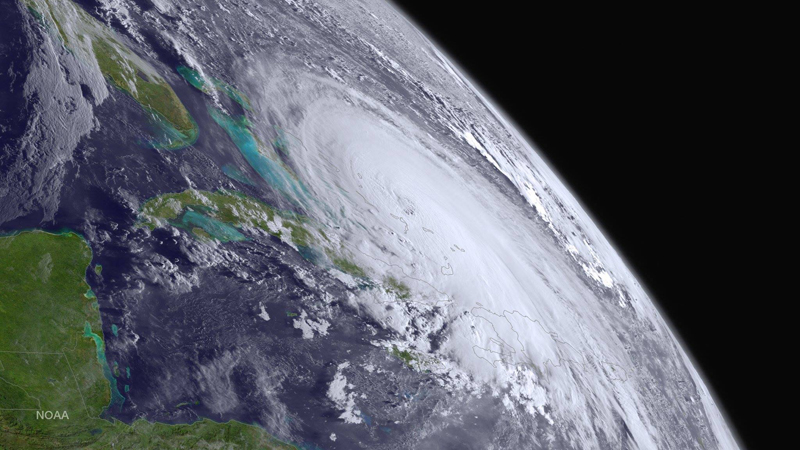BIOS Report On Local Hurricane Preparedness
Coinciding with the end of the 2015 hurricane season, BIOS Bermuda Risk project has released its postmortem report on Hurricane Joaquin, authored by Dr. John Wardman and Dr Mark Guishard of the Risk Prediction Initiative at BIOS.
BIOS said, “One aspect of the report focusses on the meteorology of the storm and its interaction with the ocean.
“A significant finding is that Joaquin weakened in intensity before making its closest point of approach to Bermuda, likely due to passing directly over its own ‘cold wake’.
“BIOS scientists sampled the upper ocean temperatures near Bermuda using autonomous underwater gliders, and found that they had cooled, concurrent with Joaquin’s passage.
“Cold wakes form when hurricanes pass over the ocean surface, churning up colder water from below the surface and forcing warm surface water downwards.
“This phenomenon has a direct feedback on the intensity of a storm, and can cause it to weaken, potentially lessening the wind speed and thus impacts at landfall. This effect was also recorded in an assessment of impacts to Bermuda during the 2014 hurricane season.
“The report also explores aspects of the island’s resilience and adaptation in the context of increased hurricane activity over the 2014 to 2015 period.
“Additionally, this study highlights the individual and collective response measures that Bermuda’s major infrastructure organisations take before, during, and after the passage of a hurricane, and how they collaborate via the Emergency Measures Organisation.
B”IOS consulted with entities including the Bermuda Hospitals Board, BELCO, and Government departments in the development of this report.
“Clear indications were found for increased organisation and improved management procedures for hurricanes since Hurricanes Fay and Gonzalo, the impacts and lessons from which have strengthened societal resilience.
“One specific example is the pre-positioning of ambulances at strategic points in the east and west ends of the island.
“Also, the increased use of social media by agencies such as the Bermuda Weather Service before, during and after hurricanes has improved the communication of critical information to the public in the last few years.
“However, impacts from previous storms can leave infrastructure more vulnerable, such as at the National Museum, where new roof damage induced by Joaquin led to water ingress into the Commissioner’s House, which exacerbated existing interior damage.
“The Bermuda Risk project was launched in September 2015 to provide scientific insights into natural hazards to inform local business and emergency management decision-making.
“This was made possible through generous local sponsorship by the Bank of Butterfield, LRC Ltd. and Polaris Holding Company Ltd., and also by a research grant from the Member companies of the Risk Prediction Initiative.”
For more information and a copy of the report, please visit bdarisk.bios.edu, or view the PDF directly here.
Read More About
Category: All, Environment, News



Well done Dr. John Wardman and Dr. Mark Guishard!